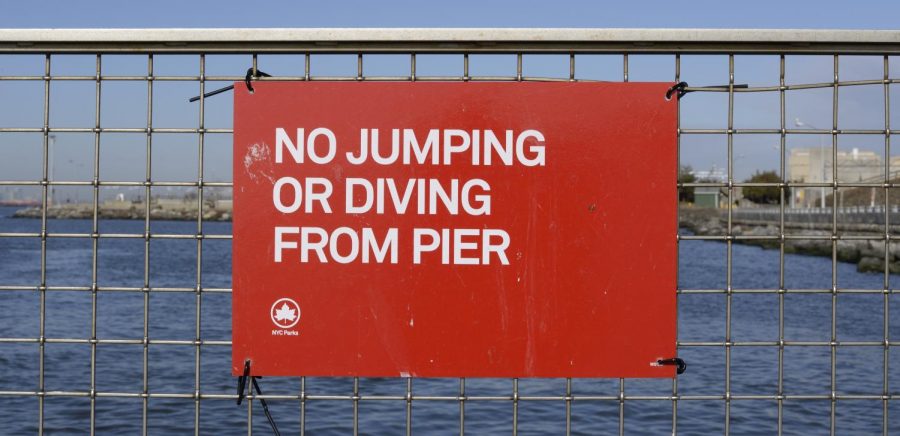Fordham Murder Case Resurfaces After 22 Years
On the 23-degree evening of Feb. 16, 1997, when Patrick McNeill, a junior at Fordham College at Rose Hill, left campus, his family had no idea that they would never again hear from their son.
By the late ’90s, the Dapper Dog, a bar on Manhattan’s Upper East Side, had established itself as a popular watering hole for Fordham students where a lack of ID checks and laissez-faire bartending policies created the perfect environment for underage drinking. Neighborhood residents had issued countless public drunkenness and noise complaints against the bar.
On the night of McNeill’s stop at the bar, one of his fellow classmates was bartending. McNeill’s roommates described him as “a real ladies’ man,” adding, “we’d tease him about his clothes, his cologne, how he had to be perfect.” Fordham professors praised his work, and McNeill himself wanted to one day join the FBI.
In the early hours of Feb. 17, after throwing up in the bar’s bathroom, McNeill announced to his friends that he would be taking the subway back up to Fordham. He waited outside for one of his friends, but when she failed to appear, onlookers noticed him start to stumble up Second Avenue. A double-parked van followed him up the avenue, stopped when he stopped and turned on East 90th Street when he did. After that, no one saw Patrick again.
That is, until after over a month of canvassing Upper Manhattan and hanging up missing person signs, his body was recovered floating next to a Brooklyn pier in the East River. The medical examiner who performed McNeill’s autopsy classified his death as “undetermined.” His blood alcohol content was determined to be 0.16. The NYPD’s official consensus is that Patrick drunkenly stumbled his way over to the East River, fell in and drowned.
Retired NYPD detective Kevin Gannon does not believe this assessment. Gannon was one of the detectives who investigated Patrick’s case. He promised his parents that he would find their son’s killer. Or killers.
Twenty-two years later, he hasn’t given up on this promise. Today, Gannon and his team of private investigators travel from city to city, investigating, case by case, the Smiley Face Killer theory. He suspects that an individual or group stalks, abducts and ultimately kills young college-aged men. The name of the theory derives from one chilling clue: graffiti of a smiley face found near where most every body has been discovered.
In McNeill’s case, Gannon holds that he was “stalked, abducted, held for an extended period of time, murdered and disposed.” While this theory may seem like a stretch, a look at the evidence suggests otherwise.
To end up in the East River from 90th Street, one would have to cross the notorious FDR Drive, a limited-access expressway with fencing on both sides. It seems nearly impossible that anyone sober, much inebriated, could stroll over one of Manhattan’s busiest highways unimpeded.
Further oddities presented themselves during Gannon’s investigation. Patrick’s autopsy suggested that he was bound and burned before being placed in the river.
Fly larvae were found on McNeill’s body — flies do not lay eggs in cold temperatures, such as the night that Patrick ostensibly drowned.
Gannon’s team did not respond to a request for comment.
Most eerily, Larry Andrews, another young college-aged man, was discovered floating deceased in the same location as McNeill almost exactly one year later. However, Andrews didn’t go missing on the Upper East Side. He was last spotted with friends on 42nd Street near Times Square on New Year’s Eve.
Since then, hundreds of college-aged males have been found dead in bodies of water across at least 25 cities in the Northeast and Midwest United States. The causes of their deaths were reported as either accidental or undetermined. Is it really this cut-and-dry? Are all of these 20-something-year-old men, many star athletes, drowning accidently after a night of drinking?
Today, many Fordham students are unaware of such a sinister event surrounding the university, but were shocked upon learning about it. “It’s crazy to know that such a strange series of events involved Fordham,” Corbin Gregg, Fordham College at Lincoln Center ’22, said.
Another student, Liam Leahy, Fordham College at Rose Hill ’22, views the deaths as a lesson to college students. “If one is going to part, go with friends. There is strength in numbers,” he commented. “Use pack mentality.”
While we may never know for sure the truth behind these mysterious deaths, the evidence does not suggest that these young men are simply falling into rivers and drowning in hordes. With a new TV series to reinvigorate public interest in the case, Gannon’s team hopes that more police departments will reopen their suspicious drowning cases to allow for further investigation.
To this day, McNeill’s death is still classified as an accidental drowning by the City of New York’s Medical Examiner’s Office.

Leo Bernabei, Fordham College Lincoln Center ’21, enjoys writing political takes for the opinions section but dabbles with all sorts of stories. He hopes to one day warm a seat in the Oval Office, but is more importantly on a quest to find the best burger in New York City.







Lisa Garcia • Jun 25, 2021 at 2:54 pm
Inside larrvae could have been found in his genitals because of ejaculation. One program mentioned similar cases across the country: handsome, educated, very fit white men. I believe theses men are killed for their sperm. Their appearance and other exemplary qualities are what many women seek when visiting a sperm bank. As one program referred to these men as possibly being seen by their killers as ” elitist,” I say this quality is exactly what their, and prospective parents, killers wanted. Having their sperm is a sure thing as opposed to taking your chances with self-reported stats at a sperm bank.
Space trash • May 17, 2021 at 5:39 pm
Sounds like a gang initiation. It’s the only thing I can think that makes sense to me. Plus for whichever gang it’s probably a two for one. Woman drugs guy (initiation for her) then they follow him, get him (second initiation for a male) for them to kill him. I do feel like I see an unusual amount of college students going missing and then found in a river.
Kit • Mar 16, 2021 at 3:48 am
Noreen in 1997 DNA testing was not very advanced you needed a good amount of a fairly fresh sample to test it. Later into the 2000’s the technology became better and small samples could be amplified to be tested . Also DNA does degrade pretty fast and as the body was in the water for a few weeks or longer it would be pretty unlikely that any DNA other than the persons own could be found.
Noreen McGovern • Nov 7, 2020 at 8:34 pm
I find it strange they never found or said they even looked for DNA.
Does anybody know if the took rape tests on these young men?
Peg • Sep 30, 2020 at 8:44 pm
It is totally false that there were smiley faces drawn where most of these bodies were found. It’s sloppy to insert that false claim which is blatantly false. David Paulides who has been investigating this case and similar cases around the globe has talked about this claim. He said it’s FALSE. He has never seen any smiley faces or heard of anyone else finding them.
J Lucyk • Aug 5, 2019 at 2:38 am
Has anybody spoken to the McNeil family about their opinion on Patrick’s death? I read they filed lawsuits against the bartender and the bar owners.
James Marsh • Feb 20, 2019 at 11:25 am
Great writing. Enjoyed your article. I have been a journalist for 60 years – also Zach Hutcheon grandpa for 20 of those years. Zach sent me a link to your piece. JM